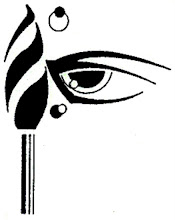Reference: ART News/Summer 2005 Collection Management Checklist by Vivian Ebersman, Director of Art Expertise AXA ART Collection Management Series
 |
AXA Art Collection- page image
1. Collection management is an ongoing process. Start by documenting and tracking relevant information.
2. Maintain a file for each work. Records can be paper, electronic, or a mixture.
3. Attend the exhibitions of the artists you collect. Clip their reviews.
4. Turn to a certified appraiser when you need specific information about value.
5. Decide whether you need Fair Market Value or Insurance Replacement Value. Obtain the conservator's report for your file if you send work for conservation.
CHECKLIST: You've assembled a collection.
How do you look after it?
First, this ongoing process extends from proper installation and the right inn's coverage to planning for subsequent stewardship. A conservator, appraiser, and attorney may all play a role.
Documenting each work
Research
Tracking
Checklist
You've assembled a collection. How do you look after it?
Documenting each work
An excellent first step is documenting and tracking relevant information. Maintain a separate file for each work. Include the purchase invoice with the date and seller. Ask the gallery or auction house for available photographs, exhibitions, and conservation histories. Take color photographs of the back and front of a painting and several angles of a three-dimensional object.
Record information on the back of the photograph, as it will be hidden once the painting is framed. Train your eye to detect all nuances about the baseline condition of each object. Is there an irregular patch of paint? Do striations appear in the patina of a bronze sculpture? Date all observations. Finish by completing the checklist on the next page.
Your records can be paper, electronic, or a mixture with a simple spreadsheet, Microsoft Access database, or off-the-shelf collection management software. You can create reports with ease. Plan to store a copy of your data in a separate location. Although you may prune works from your Collection, keep the records. They are a valuable part of your collection history.
Research
Learn all you can about the content or meaning of each work and the times it was made. Research the artist's biography. Make it a goal to visit exhibitions of artists you collect. Clip and save their reviews from newspapers, magazines, and online. Follow their stylistic development. Whose works are like theirs? What periods within their work are considered most important? Challenge yourself to grasp the details as well as the larger picture.
Tracking
You will want to know the market conditions for the areas you collect. Are values climbing, falling, or remaining stable? This information will guide many decisions, from insurance and gifting to security and estate planning. Auction catalogs and online auction databases such as Artnet.com, artprice.com, or AskART.com provide a good range of pricing for paintings and sculptures. Artfact.com follows furniture and decorative arts as well.
For a more precise figure, turn to a certified appraiser. Specify whether you require a fair market value (the basis – with adjustments—for taxes, gifts, and donations) or replacement value (for insurance). Fair Market
Value is equivalent to the price likely to be received at an auction. Replacement value is usually higher and can be considered an object's retail price. Therefore, it is wise to have a collection reappraised every five years. As the previous suggests, good collection management is the rational side of collecting. Yet its rewards are also satisfying, yielding a satisfactory result: a collection secured for ages.
Checklist
Below is essential information for recording each item in your collection. Find a similar checklist at AXA-ART.
Artist/Maker
Dates of Artist/Maker
Title of Work
Description of Subject Matter or Type of Work
Date of Work
Materials
Dimensions
Condition: Describe the object's surface and carefully note any changes during periodic re-examinations. Obtaining the conservator's report and filing it if you send work for conservation. Note in your record the date of the information and that you have added it to the file.
Inscriptions and Markings: Examine every two-dimensional work's back and front. Record earlier labels, inventory numbers, artist signatures, and other writing.
Distinguishing Features
Location of object: Significant if you have more than one residence.
Display: Who framed or mounted it? How is it secured?
Provenance: What is the collective history of the object? To whom did it previously belong? Pay special attention to antiquities and any work created before 1946 that was thought to be in Europe after 1932.
Bibliography: Is your work cited in the catalog raisonne (a systematic annotated catalog, especially a critical bibliography) of the artist? This will affect valuation, as authentication frequently depends on a work's inclusion in the accepted catalog raisonne. Are there other citations?
Exhibition History: Please file a copy of the catalog of any show in which a work has appeared. Otherwise, copy the complete reference, including dates and locations.
Purchase Price and Date
Appraisal History
Loan History: Record exhibition dates, venues, and the value placed on the work at the time of the loan. Make notes about the condition report from each location.







